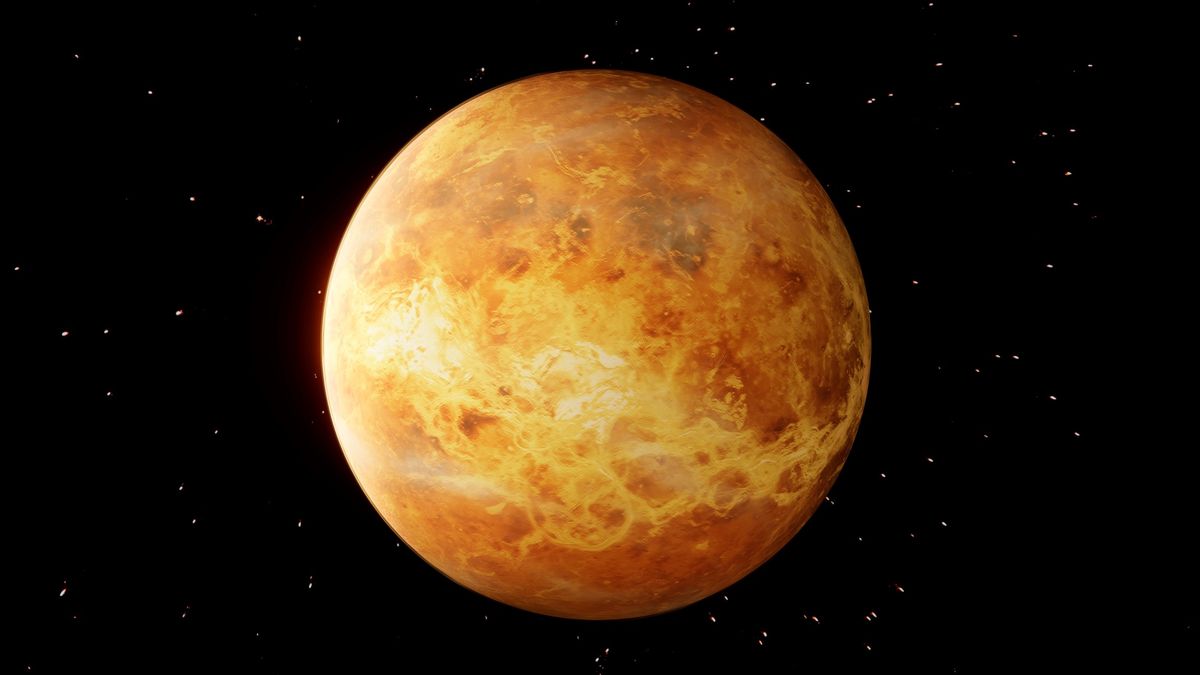Venus is a planet next to Earth, but it is obscured by a thick, opaque atmosphere, making it extremely difficult to study.
A research team from the University of California, Los Angeles conducted a 15-year radar survey to see what lies beneath the clouds of Venus.
The researchers published the results of their research in the scientific journal Nature Astronomy on April 29 , revealing previously unknown details about Venus’ axis and rotation, as well as reporting that the size of Venus’ core is 3,500 km in radius.
The veil of mystery surrounding Venus, a nearby yet mysterious planet, seems to be slowly being lifted.
A neighboring planet that is difficult to investigate
Venus is a planet next to Earth and, along with Mars, is the celestial body closest to Earth.
In addition to being close, Venus is a rocky planet that shares much in common with Earth, with roughly the same size, mass and density .
Analysis by the Russian Venus probe Venera, which briefly landed on the surface , showed that the surface rocks were similar to Earth’s granite and basalt .
Still, Venus’ fundamental properties remain unknown .
The reason for this is that Venus is on the side of the Sun seen from Earth, making it difficult to observe using light.
Furthermore, Venus is covered in thick clouds of sulfuric acid, making it difficult to see what the surface looks like even using space probes.
It is also so hot that even lead melts on its surface.
Even if we descend a probe, we won’t be able to keep it active for long periods of time like we can on Mars.
So a research team from the University of California, Los Angeles (UCLA) has been conducting research for 15 years by bombarding the surface of Venus with radar and observing the reflection from Earth .
Professor Jean-Luc Margot of UCLA, who led the study, explains that Venus was used like a disco ball.
The powerful radio wave light emitted from Earth was reflected by Venus, which sparkled like a disco ball, and by observing this, detailed information about Venus was obtained.
The survey was successful in determining the exact length of Venus’ day, its axial tilt, and the size of its core .
This information will reveal how Venus’ mass is distributed internally and provide clues to its internal structure.
Furthermore, without accurate data on the planet’s rotation, the landing site for a full-scale Venus landing survey in the future could be off by more than 30 kilometers.
When descending to a planet with complex terrain, precise operation to the landing site is extremely important.
In this sense, the results of this survey were significant.
Venus: The time of day keeps changing
The new radar measurements reveal that the exact mean length of a Venus day is 243.0226 Earth days .
A day on Venus is roughly two-thirds of an Earth year.
What was also revealed for the first time was that Venus’ rotation speed is not constant, but is constantly changing .
Over the course of 15 years, Venus’ rotation speed has been both faster and slower than previous values.
This meant that the length of the day could vary by up to 20 minutes .
Estimates of the length of a Venus day have previously had trouble agreeing with each other, and these results explain why.
This unstable rotation rate may be due to Venus’ heavy atmosphere.
As the heavy atmosphere orbits the planet , it exchanges momentum with the solid ground through friction, causing the planet’s rotation to speed up or slow down.
This also causes the Earth’s rotational speed to change by about 1 millisecond per day.
Because Venus has an atmosphere 93 times thicker than Earth’s, the effect is likely to be much larger and more dramatic.
The team also reported that Venus’s axial tilt is precisely 2.6392 degrees .
The Earth’s axis is tilted at about 23.4 degrees, so this is a very slight tilt.
This measurement is 10 times more accurate than ever before .
It was also discovered that this axis wobbles slightly (precesses) with a period of approximately 29,000 years .
This is thought to be due to solar influence.
The size of Venus’ core
The precise measurement of Venus ‘ rotation speed gives us clues about its internal structure.
As mentioned earlier, the reason why Venus’ day varies by nearly 20 minutes is largely due to the influence of its atmosphere, but the research team also suspects another possibility.
That is the influence of Venus’ core .
Venus is a rocky planet similar to Earth , and its interior is believed to consist of a molten mantle and a core of iron and nickel , just like Earth’s.
To explain the recent change in rotation speed, the size of Venus’ core was calculated, revealing it to have a radius of 3,500 kilometers.
This closely matches previous estimates of Venus’ core size.
However, this time the calculations have been made using proper measurements, and it is expected that this will help in more accurate study of Venus.
However, based on current data, it remains unclear whether Venus’ core is solid or liquid .
A precise understanding of Venus’ core is important information for understanding the planet’s history.
“Unless we have a precise image of a planet’s internal structure, it’s very difficult to understand anything about it,” Prof Margot said.
The mysterious appearance of Venus may gradually become clearer with the help of new observational techniques.

